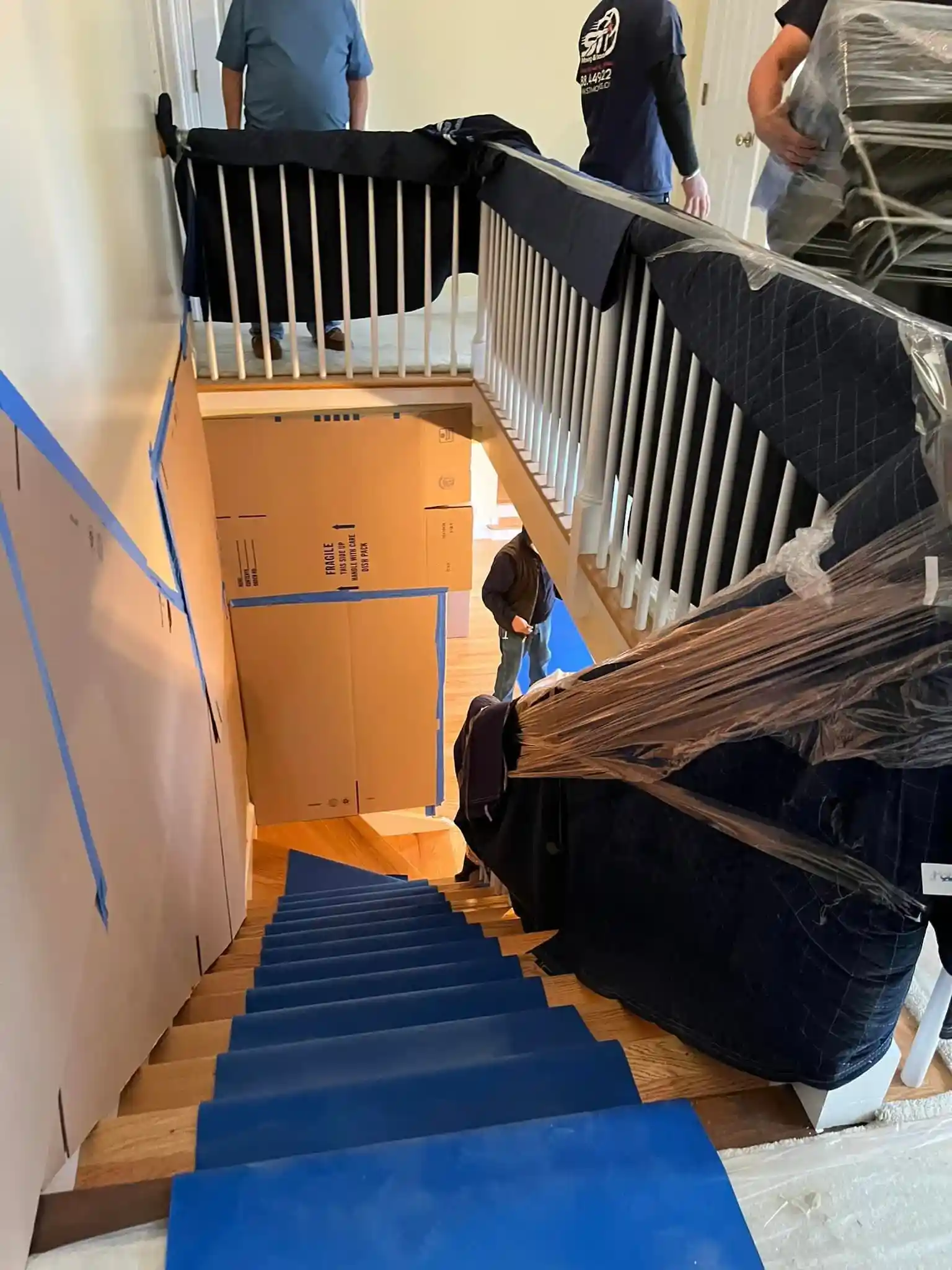On a moving day, whether you’re performing a local move or a long-distance move, there is a lot to consider – a number of people roaming around your house and avoiding a crowd, how to carry all the belongings and load onto the moving truck, and protecting the walls while moving out and in. When you hire professional Chicago movers, you don’t have to worry about the walls as the pros will take care of them. But, if you are doing a portion (or all) of the work on your own, it’s good to know how to do it right.
How do you successfully move your furniture and protect the walls of the place? Here are tips and tricks to do it well.
Get Enough People to Help
When you know you will have enough people to carry the furniture around, there will be less chance for slip-ups and potential scratching of the walls. Whatever you do, don’t underestimate the weight of your furniture.
To make this process easier, enlist family members, friends, or neighbors who can assist with specific tasks, such as lifting, guiding items through doorways, or holding doors open. Each extra set of hands helps reduce the chance of accidentally hitting walls, door frames, or other fixtures. If possible, assign one person to act as a spotter or guide, helping direct movers and ensuring that all angles are covered as you carry larger items. This added help will keep your belongings and walls safe and save time.
Wear Appropriate Clothes and Shoes
As insignificant as it may sound, clothes and shoes are far from it when it comes to moving furniture. Make sure to avoid anything baggy and loose so it doesn’t catch onto the items and cause a potential injury or damage. Also, shoes are crucial – wear something comfortable with secure soles so you avoid slips.
Choose clothes that allow for free movement without excess fabric that might snag on furniture or door frames. Additionally, sturdy footwear with non-slip soles is essential for maintaining good balance and stability, especially on surfaces like hardwood or tile, where slips can be more likely. Closed-toe shoes protect your feet from dropped items, while a supportive sole helps you feel more secure and less fatigued over the course of moving day. Dressing with safety in mind will make handling heavy or awkward items much easier and safer.
Disassemble the Furniture
Some heavy items need to be carried in one piece – when you are relocating a refrigerator, for example, it rarely gets disassembled. However, many pieces of furniture can be taken apart for easier carrying and protecting the walls around you from scratches and nicks.
Disassembling larger furniture items, such as tables, bed frames, or bookshelves, reduces the chance of scraping walls or doorways. Before disassembling, label each part or screw with a small bag or tag to keep track of components. Wrapping any sharp or protruding parts in padding before moving helps keep both your furniture and walls safe. Transporting furniture in smaller parts also gives you greater control, helping avoid bumps or scrapes in narrow hallways and tight corners.
Protect the Walls with Specific Items
You can protect the walls in different ways, and one of them is with blankets or cardboard. Another way to protect them is to put corner protection on the furniture which will prevent scratching. Good luck, and we wish you a happy move!
Moving blankets and furniture pads are excellent for shielding walls and doors from accidental contact. Drape blankets over larger items or tape cardboard sheets against walls in tight spots to create a buffer. Cardboard can also be cut and secured to the sides of stairways, where sharp turns could otherwise lead to damage. Additionally, foam corner guards on furniture help absorb impact, making it easier to navigate around doorways or through narrow areas without scratches or dings. Taking a few minutes to protect these areas can save you from costly repairs down the line.
Plan the Path Before Moving Each Item
Before you start moving larger pieces, take a moment to plan the route each item will take. Measure doorways, hallways, and staircases to make sure your furniture will fit through without issues. Knowing the best path in advance reduces the chance of accidents and helps keep your walls protected.
If a particular item is too large to fit through a standard doorway or hallway, consider using alternative entrances or temporarily removing doors to make extra space. Having a clear route mapped out also lets your helpers know where they’re going, making it easier to communicate and coordinate each step of the move. This pre-planning is a simple yet effective way to minimize damage and make the entire process more efficient.
Take Regular Breaks to Avoid Fatigue
Moving is physically demanding, and fatigue can lead to mistakes that might damage walls or other parts of your home. Schedule regular breaks for yourself and your helpers to stay energized and focused. Short rests allow you to recharge, reducing the risk of accidents caused by exhaustion.
During breaks, drink water and have small snacks to maintain energy levels. Moving while tired or dehydrated increases the likelihood of mishaps, so staying refreshed is essential. Encouraging a steady pace with breaks also keeps morale up and ensures that everyone involved can continue moving items carefully. When everyone is alert and well-rested, they’re more likely to handle items with the care needed to avoid accidents.
Conclusion
Moving day requires careful planning, and taking steps to protect your walls and furniture can save you from unnecessary stress and costs. By enlisting enough helpers, wearing suitable clothing, and using protective items like blankets and cardboard, you’ll safeguard your home from potential damage. Disassembling furniture, planning routes, and taking breaks all contribute to a safer, smoother move. With these strategies, you can protect your space and enjoy a successful, stress-free moving day. Happy moving!



